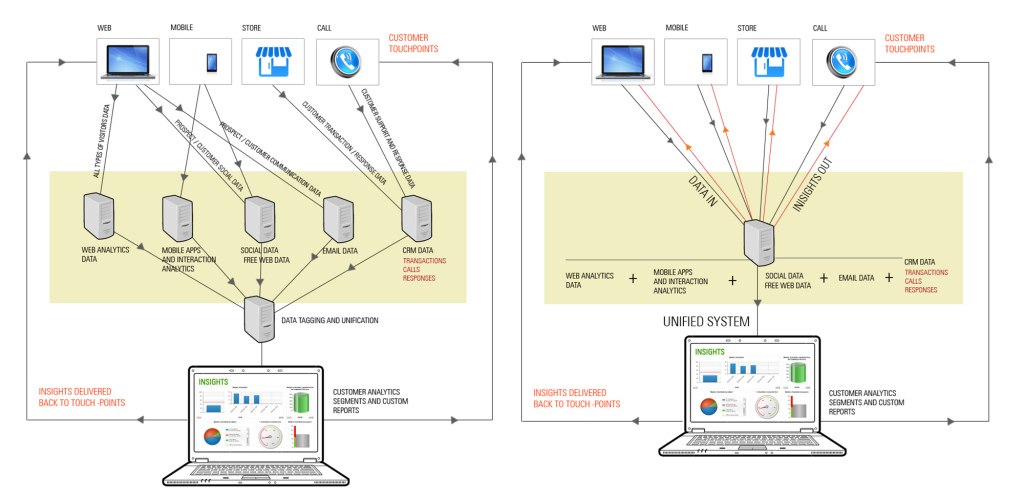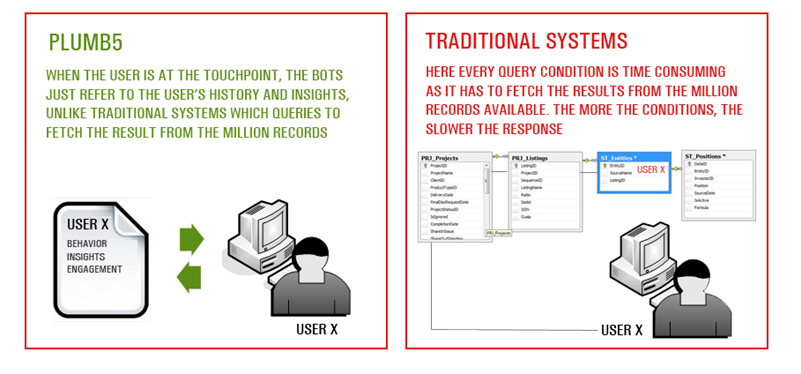Businesses are looking at implementing SMAC solutions in order to transform their digital business. If the objective was to get more insights into the business so that you can optimize customer centric processes and spends, then SMAC solves only a part of it. The Unified stack is much more agile and solves most customer centric problems, as the fundamentals of the unified architecture is to align and store data by individual customers
Unified Stack Architecture will help marketers align with 1:1 communication with every customer, which are the most targeted steps in conversion marketing. The stack also helps marketers understand and measure their marketing spends accurately and enables real-time tracking of revenue and spends
But in the case of SMAC Stack, it picks data from different silos, and attempts to tag it based on available identifiers, and makes room for insight leaks and data redundancy, also due to its unstructured nature. But in the Unified Stack, data is tagged at the touch-points (client application) with necessary parameters.
The most important aspect of Unified Stack is that data tagging starts at the customer touch-point and extends across all other touch-points by maintaining a unified document for every customer, irrespective of the touch-point.

Unlike SMAC, the Unified stack architecture covers all aspects of data workflow spanning collection, analysis and insight delivery. In SMAC, if you were to create a customer segment and plan a campaign to increase more sales, you will have to use another end-point application to deliver campaigns based on insights. Now that the responses to these campaigns have to be re-tagged back to the customer data source for data unification. Unified Stack maintains a single document for data collection and data delivery, which is tagged at every interaction, ensuring real-time unified data at all times
Handling Data Performance
After having worked with Plumb5 Unified Stack, our experience shows most of the performance issues mattered most at the customer end-point applications, which served to millions of customers. So we created a unified document for each user, which holds the entire life-cycle information irrespective of their touch-points.
Now, instead of running across the million records to get information/insights of a particular user, you just have a refer to the document pertaining to the user, which holds all the information/insights of that user
So, when your customer is at your online store and if you were to recommend products to them based on past interactions + transactions , you don’t have to run complex queries to search million records. You just have to look at the customer’s unified document and that would have every information, that you need to know about them

To know more about Plumb5 Unified Architecture works, view this link
